Top 10 Things about Mardi Himal Trek
We've trekked countless trails across Nepal, and the Mardi Himal Trek consistently surprises us as one of the most rewarding yet underrated adventures in the Annapurna region. This relatively new trekking route offers an incredible mountain experience without the crowds that pack other popular trails.
Our guide is designed for intermediate trekkers and adventure seekers who want authentic Himalayan experiences combined with comfort and safety. We've helped hundreds of travelers discover this spectacular trail, and we're excited to share what makes it so special.

In this comprehensive breakdown, we'll explore the trek's stunning mountain panoramas that rival any view in Nepal, including close-up vistas of Machapuchare and Mardi Himal peaks. We'll also dive into why this route serves as the perfect alternative to busier Annapurna trails, offering the same dramatic landscapes with a fraction of the foot traffic. Plus, we'll cover the diverse ecosystems you'll encounter, from lush rhododendron forests to alpine meadows, making every day on the trail feel like a new adventure.
Get ready to discover why the Mardi Himal Trek has become our go-to recommendation for trekkers seeking that perfect balance of challenge, beauty, and cultural immersion in the heart of the Himalayas.
Breathtaking Mountain Views and Panoramic Vistas
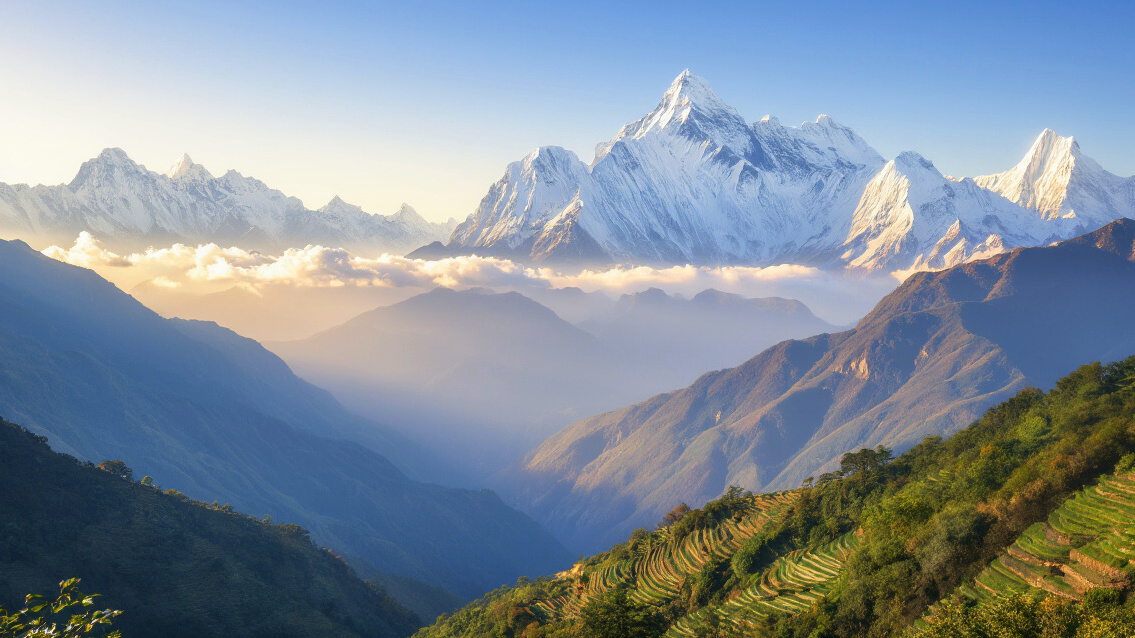
Unobstructed Views of Annapurna South and Hiunchuli
We can't overstate the sheer magnificence of standing face-to-face with Annapurna South (7,219m) and Hiunchuli (6,441m) on this incredible trek. What makes the Mardi Himal route truly special is how these towering giants appear to rise directly from the valleys below, creating an almost surreal backdrop that changes with every step we take. The ridge path offers us completely uninterrupted sightlines – no other peaks blocking our view, no dense forests obscuring the panorama.
During our trek, we've noticed how these mountains seem to grow larger and more imposing as we gain altitude. The south face of Annapurna reveals its dramatic ice seracs and hanging glaciers, while Hiunchuli presents its sharp, pyramid-like summit that pierces the sky. We particularly love how the afternoon light transforms these peaks into golden monuments, and the way morning shadows create deep blues and purples across their massive faces.
Close-up Encounters with Mardi Himal Peak
Our destination peak, Mardi Himal (5,587m), offers us something unique – we actually get to walk right up to its base. Unlike many other treks where we view mountains from distant viewpoints, this route brings us incredibly close to our namesake peak. We can almost reach out and touch the rocky outcrops and snow fields that make up this beautiful mountain.
The approach to Mardi Himal Base Camp takes us through a landscape that feels like we're walking on another planet. Rocky moraines, alpine meadows dotted with prayer flags, and the constant presence of the peak looming above create an atmosphere we've rarely experienced elsewhere. We love how the mountain changes personality throughout the day – sometimes shrouded in mysterious clouds, other times standing crystal clear against brilliant blue skies.
Spectacular Sunrise Views from High Camp
We wake up at High Camp (4,500m) to what many of our trekkers call the most beautiful sunrise they've ever witnessed. The pre-dawn darkness gradually gives way to a spectacular light show as the sun's first rays hit the snow-capped peaks around us. The entire Annapurna range transforms from deep purple silhouettes to glowing pink and orange masterpieces.
What we find absolutely magical is watching the alpenglow phenomenon unfold before our eyes. The mountains literally seem to catch fire as warm light spreads across their faces, while we stand in the cool shadows of dawn. We always recommend our trekkers bring their cameras, but honestly, no photograph can capture the emotional impact of witnessing this natural spectacle firsthand.
360-degree Mountain Panoramas from Viewpoint
The viewpoint above High Camp delivers what we consider one of Nepal's most comprehensive mountain panoramas. We're treated to a complete circle of peaks that includes not just the Annapurna range, but also views extending to Dhaulagiri, Manaslu, and on clear days, even glimpses of distant peaks in Tibet.
Standing at this vantage point, we can identify over 20 major peaks, each with its own character and story. The panorama stretches from the Kali Gandaki gorge in the west to the Marsyangdi valley in the east, encompassing an incredible variety of landscapes below us. We often spend hours at this viewpoint with our trekkers, using binoculars to pick out details on distant peaks and valleys that sprawl out like a three-dimensional map beneath our feet.
Less Crowded Alternative to Popular Annapurna Treks
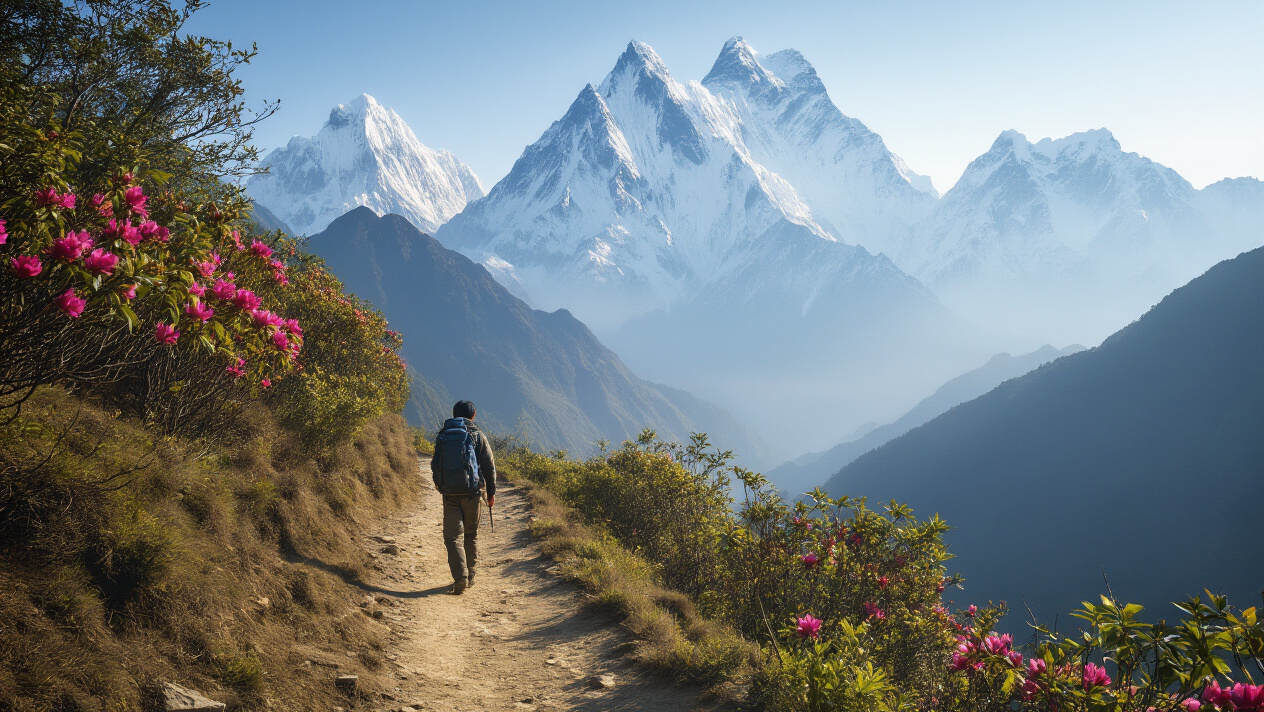
Peaceful Trail Experience Away from Tourist Masses
Walking along the Mardi Himal route feels like discovering a hidden gem that somehow escaped the attention of mainstream trekking crowds. While popular trails like Everest Base Camp and Annapurna Circuit can feel like busy highways during peak seasons, we find ourselves enjoying quiet mornings with nothing but birdsong and our own footsteps breaking the mountain silence.
We love how this trail gives us genuine moments of solitude where we can truly connect with the Himalayas without constantly stepping aside for other trekking groups. The narrow paths wind through pristine forests where we might encounter just a handful of fellow adventurers throughout an entire day. This peaceful atmosphere lets us fully appreciate the natural sounds of the mountains - rushing streams, wind through rhododendron leaves, and distant avalanches echoing from nearby peaks.
Our clients consistently tell us that some of their most memorable moments happen during these quiet stretches where they can pause, breathe deeply, and feel completely immersed in the mountain environment. We've watched people rediscover their love for hiking when they don't have to worry about overcrowded teahouses or competing for photo spots at viewpoints.
Authentic Cultural Interactions with Local Communities
The smaller crowds on Mardi Himal create perfect opportunities for meaningful connections with local people that we rarely see on busier routes. Village families have more time to share stories about their daily lives, farming practices, and mountain traditions when they're not overwhelmed by constant streams of trekkers.
We often arrange visits to local homes where families invite us to share traditional meals and demonstrate age-old crafts like weaving and pottery. These intimate experiences happen naturally because locals aren't rushing to serve dozens of other groups. Children approach us with genuine curiosity rather than viewing us as just another source of candy or pens.
Our guides have built strong relationships with community members along this route, allowing us to offer authentic cultural exchanges that benefit both visitors and locals. We've seen trekkers learn traditional cooking methods, participate in seasonal festivals, and even help with farm work when timing aligns perfectly.
Local teahouse owners take pride in sharing their personal stories and family histories rather than simply processing tourists through their establishments. We treasure these connections because they remind us why we fell in love with Nepal's mountain culture in the first place.
Pristine Natural Environment with Minimal Human Impact
The untouched beauty of Mardi Himal's ecosystem amazes us every single time we guide groups through these landscapes. Dense rhododendron forests bloom in spectacular displays during spring months, creating natural gardens that rival any cultivated space we've ever seen.
We encounter wildlife species that have learned to trust this quieter environment - from colorful pheasants crossing our path to curious monkeys observing us from safe distances. The reduced foot traffic means vegetation grows more densely, streams run clearer, and natural habitats remain largely undisturbed.
Trail maintenance happens through community cooperation rather than heavy machinery, preserving the organic feel of walking through wilderness areas. We appreciate how local conservation efforts focus on sustainable practices that protect fragile mountain ecosystems while still allowing respectful tourism.
Crystal-clear mountain streams provide safe drinking water throughout most of the trek, and we rarely encounter the litter problems that plague more popular routes. Our commitment to Leave No Trace principles feels more meaningful here because we can see direct evidence of how minimal human impact preserves these incredible natural spaces for future generations.
Diverse Landscapes and Ecological Zones
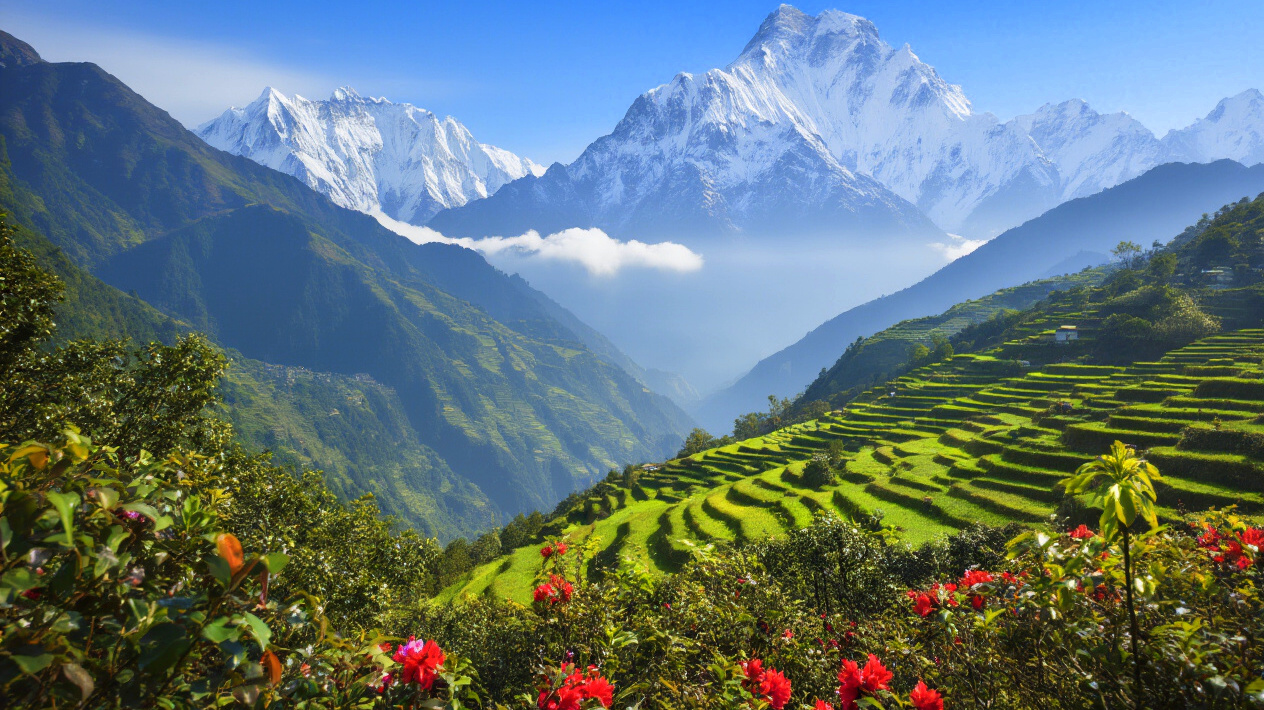
Lush Rhododendron Forests in Lower Elevations
We start our journey through vibrant rhododendron forests that blanket the lower slopes of Mardi Himal between 1,500 to 3,000 meters. These magnificent forests showcase Nepal's national flower in all its glory, with over 30 species of rhododendrons painting the landscape in brilliant reds, pinks, and whites during spring blooming season. We walk through dense canopies where ancient trees create natural cathedrals, their twisted branches forming intricate patterns above our heads.
The forest floor comes alive with a carpet of moss, ferns, and wildflowers that thrive in the humid, sheltered environment. We often spot colorful orchids clinging to tree trunks and hear the melodic calls of Himalayan birds echoing through the woods. These forests provide crucial habitat for wildlife and serve as natural water reservoirs, feeding the streams that cascade down the mountainside.
Alpine Meadows and High Altitude Grasslands
As we climb higher, the dense forests give way to expansive alpine meadows that stretch across rolling hills and gentle slopes. These grasslands, located between 3,000 to 4,000 meters, offer some of the most peaceful trekking experiences we've encountered in the Himalayas. We walk through seas of golden grass that sway gently in mountain breezes, punctuated by seasonal wildflowers that create natural bouquets across the landscape.
During summer months, these meadows transform into vibrant displays of blue poppies, primulas, and gentians. We love how these open spaces provide unobstructed views of the surrounding peaks while offering perfect spots for rest and photography. The meadows also serve as grazing grounds for yaks and local livestock, adding a pastoral element to our mountain adventure.
Dramatic Ridge Walks with Steep Mountain Faces
Our trek includes thrilling ridge walks that expose us to some of the most dramatic terrain in the Annapurna region. We navigate narrow ridgelines where steep mountain faces drop away on both sides, creating an exhilarating sense of exposure and adventure. These sections demand careful attention to our footing while rewarding us with unparalleled panoramic views.
The ridges offer unique perspectives of deep valleys carved by ancient glaciers and provide vantage points for photographing the massive south face of Annapurna I. We experience the raw power of mountain weather along these exposed sections, where wind and clouds create constantly changing atmospheric conditions. The contrast between the gentle meadows below and these knife-edge ridges creates memorable hiking experiences that challenge our skills while building confidence.
Glacial Moraines and Rocky Terrain at Higher Altitudes
At the trek's highest elevations, we encounter the harsh beauty of glacial landscapes shaped by centuries of ice movement. We navigate through moraines – piles of rocks and debris left behind by retreating glaciers – that tell the story of the mountain's geological history. These rocky areas require careful route-finding as we hop between boulders and cross unstable scree slopes.
The terrain becomes increasingly barren and moon-like as we approach base camp areas, with sparse vegetation giving way to raw rock and ice. We see evidence of glacial activity everywhere: polished rock faces, U-shaped valleys, and massive boulders deposited far from their origins. These high-altitude environments showcase the incredible forces that continue to shape the Himalayas, offering us glimpses into the mountain's dynamic geological processes.
Moderate Difficulty Level Perfect for Intermediate Trekkers
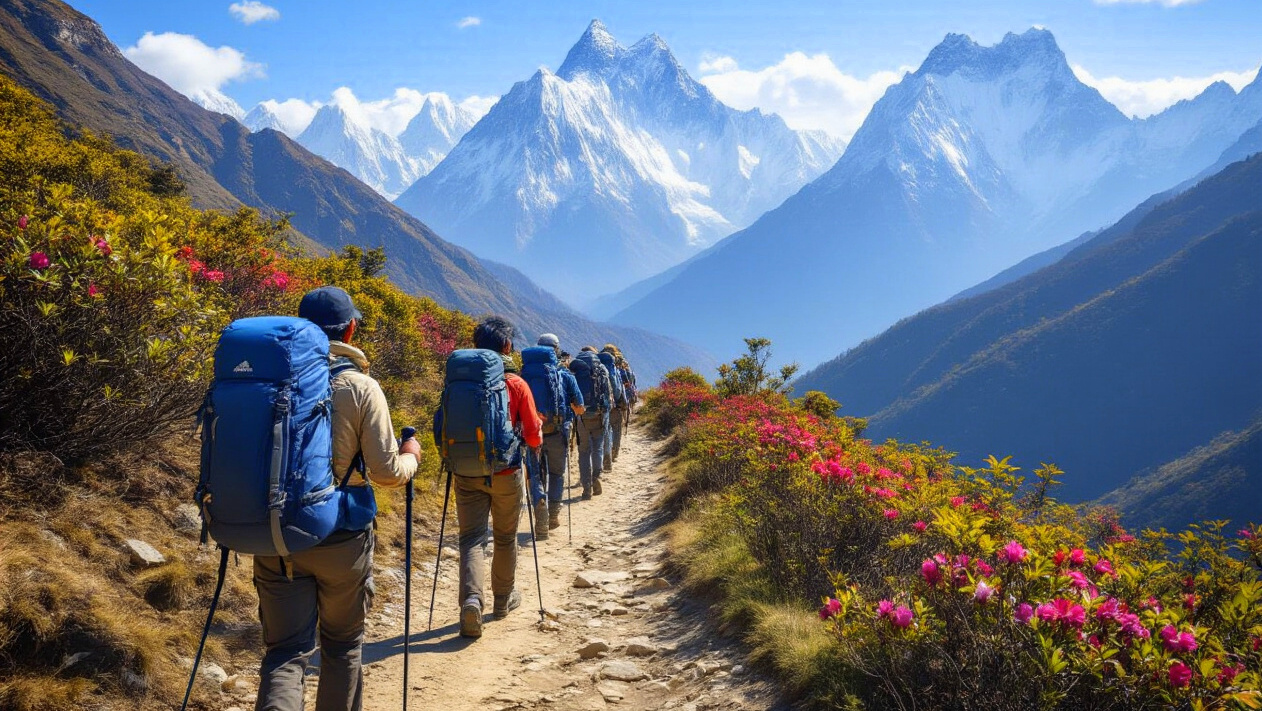
Manageable Daily Walking Hours and Distances
We've designed our Mardi Himal Trek with intermediate trekkers in mind, keeping daily walking distances between 4-6 hours. This sweet spot gives you enough challenge to feel accomplished while ensuring you don't exhaust yourself completely. Most days, you'll cover 8-12 kilometers, which might sound like a lot, but the terrain breaks naturally into manageable segments.
Our typical day starts around 7 AM after breakfast, with plenty of breaks for photos, snacks, and simply catching your breath. We've found that trekkers appreciate having energy left at the end of each day to explore teahouses, chat with locals, or simply enjoy the mountain views. The distances work perfectly for people who exercise regularly but aren't necessarily ultra-marathon runners.
What makes this trek particularly appealing is how the daily segments flow naturally. You're not grinding through endless uphill climbs or dealing with technical terrain that requires advanced skills. The path gives you variety – some uphill sections, gentle descents, and flat stretches that let your legs recover.
Gradual Altitude Gain Reducing Altitude Sickness Risk
We start our Mardi Himal adventure at Kande (1,770m), which already puts you above Pokhara's elevation. From there, we climb gradually over several days, reaching our highest point at Mardi Himal Base Camp (4,500m). This progression follows the golden rule of altitude gain – never more than 500-600 meters per day once you're above 3,000 meters.
Our itinerary includes strategic acclimatization days and we always recommend the "climb high, sleep low" approach where possible. At Forest Camp (2,520m), your body starts adapting to thinner air without the shock of sudden elevation changes. By the time you reach High Camp (3,580m), you've given your system several days to adjust.
We monitor all our trekkers for altitude sickness symptoms and our guides carry pulse oximeters to check oxygen saturation levels. The gradual ascent profile of Mardi Himal means most people with reasonable fitness levels handle the altitude well. We've seen far fewer altitude-related issues on this trek compared to more aggressive routes in the region.
Well-Defined Trail Markers and Clear Path Navigation
The Mardi Himal trail has evolved significantly over the past decade, transforming from a relatively obscure route into a well-established trekking path. We appreciate how local communities have worked to improve trail markers and signage throughout the route. Red and white painted blazes on trees and rocks mark the way clearly, especially through forested sections where paths might otherwise be confusing.
Stone cairns and prayer flags provide natural navigation points, while wooden signposts at major junctions show distances to upcoming destinations. The trail itself is well-worn and obvious in most places – you won't find yourself bushwhacking or wondering if you're going the right direction.
Our guides know every twist and turn of this route, but even independent trekkers find the navigation straightforward. The path connects established villages and teahouses, so you're never truly isolated. Local villagers along the way are incredibly helpful if you need directions or reassurance that you're on track.
We always provide our trekkers with detailed trail maps and GPS coordinates for key waypoints. While the trail is generally well-marked, having backup navigation tools gives everyone confidence, especially during weather changes when visibility might be reduced.
Rich Cultural Heritage and Traditional Village Life
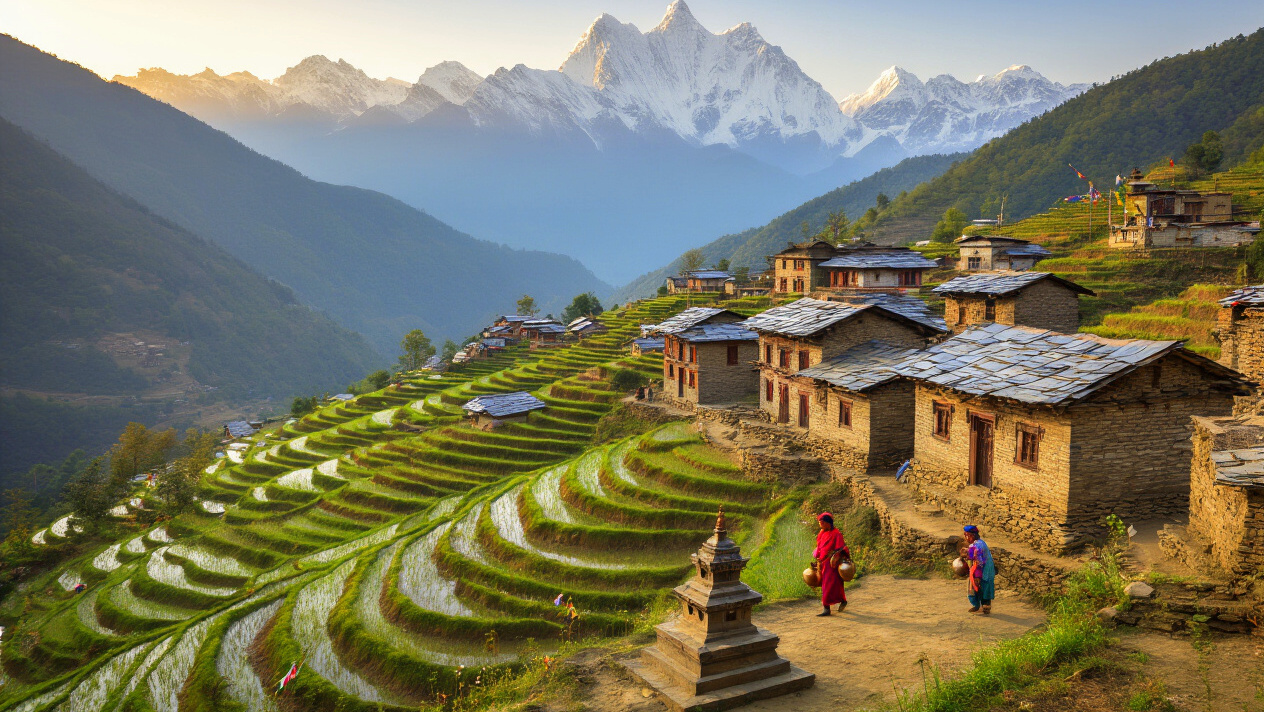
Authentic Gurung and Magar Village Experiences
During our trek through the Mardi Himal region, we have the incredible opportunity to immerse ourselves in the authentic culture of the Gurung and Magar communities. These indigenous ethnic groups have called this mountainous region home for centuries, maintaining their unique traditions despite modernization pressures. We witness their daily routines firsthand - from watching farmers tend to their terraced fields to observing traditional weaving practices passed down through generations.
The warmth and hospitality of these mountain communities never fails to amaze us. We're often invited to participate in local festivals and ceremonies, where we can experience traditional dances, music, and rituals that have remained unchanged for hundreds of years. The Gurung people, known for their bravery and service in the British and Indian armies, share fascinating stories of their heritage, while the Magar communities showcase their agricultural expertise and deep connection to the land.
Traditional Stone Houses and Local Architecture
We're constantly impressed by the ingenious architecture we encounter along the Mardi Himal trail. The traditional stone houses, built using local materials and centuries-old techniques, stand as testaments to human adaptation to harsh mountain environments. These structures feature thick stone walls that provide excellent insulation against the cold, while slate roofs efficiently shed heavy monsoon rains and snow loads.
We observe how these homes are strategically positioned to maximize sunlight exposure and minimize wind damage. The ground floors typically house livestock during winter months, while families live on upper levels - a practical design that provides additional warmth through shared body heat. Many houses feature beautiful wooden balconies adorned with intricate carvings, and we often spot prayer flags fluttering from rooftops, adding spiritual significance to the architectural landscape.
Opportunity to Stay in Community-Run Teahouses
Our overnight stays in community-run teahouses offer authentic cultural exchanges that go far beyond typical tourist accommodations. These family-operated establishments provide us with intimate glimpses into local life, where we share meals and conversations around communal fire pits. The teahouse owners, typically multi-generational families, treat us as honored guests rather than mere customers.
We appreciate how these teahouses serve as vital community gathering places where locals discuss daily affairs, plan agricultural activities, and share news from neighboring villages. The simple but clean accommodations feature traditional furnishings and decorations, giving us a genuine taste of mountain living. Many teahouses also function as informal museums, displaying traditional farming tools, ceremonial items, and family photographs spanning decades.
Local Cuisine Tasting and Cultural Exchange
The culinary experiences we encounter along the Mardi Himal trek represent one of our most treasured cultural discoveries. We savor authentic local dishes prepared using traditional methods and locally-sourced ingredients. Dal bhat (rice and lentils) serves as the staple meal, but we also enjoy unique regional specialties like gundruk (fermented leafy greens), dhindo (traditional millet porridge), and fresh cheese made from yak milk.
Our hosts often invite us to participate in meal preparation, teaching us about local spices, cooking techniques, and food preservation methods essential for mountain living. We learn about the medicinal properties of various herbs and vegetables grown in kitchen gardens, and discover how communities have adapted their diets to harsh mountain conditions. These shared meals become opportunities for cultural exchange, where we practice basic Nepali phrases while our hosts eagerly learn about our own cultures and countries.
Convenient Accessibility from Pokhara
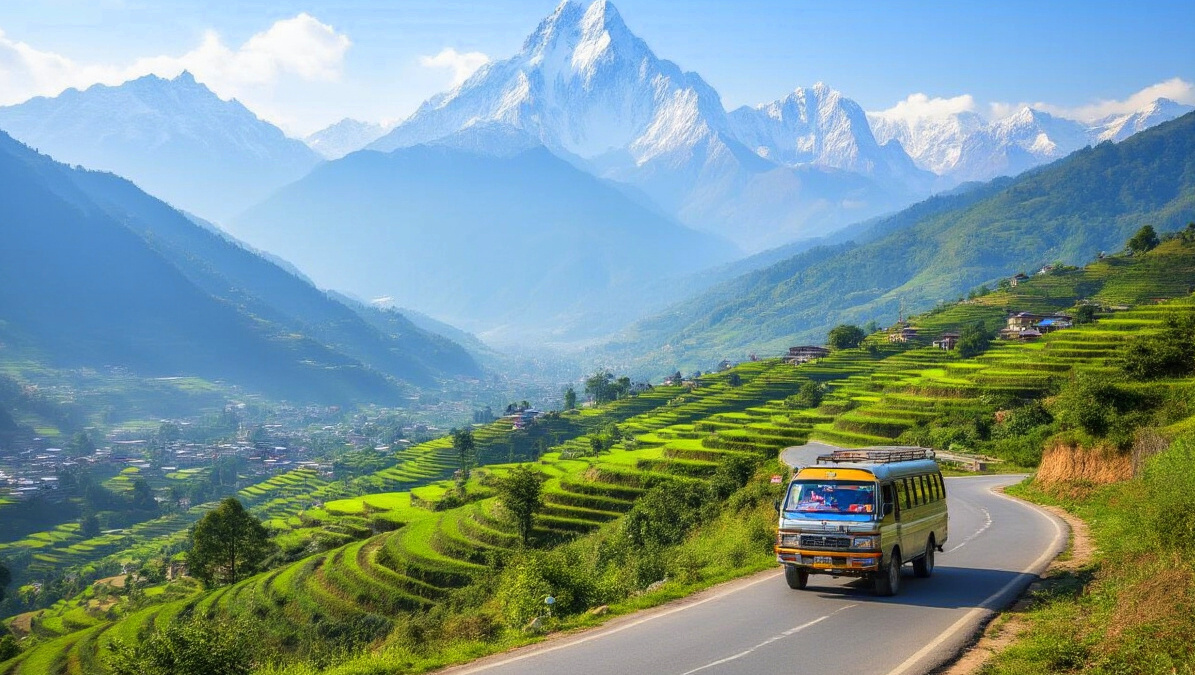
Short Drive to Trek Starting Point at Kande
We've made countless journeys from Pokhara to Kande, and we can confidently say this remains one of the most convenient trek approaches in the entire Annapurna region. The drive takes just 45 minutes to an hour, winding through beautiful countryside and traditional Nepali villages that give you a perfect warm-up for what lies ahead. Our vehicles navigate the well-maintained road with ease, and we always enjoy watching our trekkers' excitement build as the mountains come into view during the journey.
The road to Kande follows the main highway initially before branching off toward the foothills. We've found that morning departures work best, allowing you to start your trek with plenty of daylight and energy. The short distance means you won't arrive tired from a long bumpy ride – instead, you'll step out of the vehicle ready to begin your mountain adventure immediately.
Easy Transportation Options and Road Connectivity
Our experience organizing hundreds of Mardi Himal treks has shown us just how valuable good road connectivity can be. We arrange various transportation options depending on group size and preferences – from comfortable private jeeps for smaller groups to larger buses for bigger parties. The roads are generally good throughout the year, though we always check conditions during monsoon season to ensure safe passage.
We've established strong relationships with reliable local drivers who know these roads like the back of their hands. They understand the best timing to avoid traffic and can navigate any weather conditions that might arise. Our backup transportation plans mean we're never caught off guard, and we can always get you to the trailhead on schedule.
Public transportation is also available for budget-conscious travelers, though we typically recommend our arranged transport for the comfort and reliability it provides. The flexibility of private transport allows us to stop for photos, adjust timing based on your needs, and ensure everyone arrives refreshed and ready to trek.
Quick Return to Pokhara for Extended Holiday Plans
We love how the Mardi Himal Trek fits perfectly into longer Nepal itineraries. After completing your trek, we can have you back in Pokhara within an hour, giving you the afternoon to relax, celebrate your achievement, or continue with other planned activities. This quick return opens up so many possibilities for extending your holiday experience.
Our post-trek arrangements often include same-day connections to other adventures. We've helped trekkers transition seamlessly to Chitwan National Park safaris, Kathmandu sightseeing tours, or even international flights home. The proximity to Pokhara means you don't lose valuable vacation days to long return journeys.
We've also noticed that many of our trekkers appreciate having Pokhara as their base for multiple short adventures. The Mardi Himal Trek can easily be combined with activities like paragliding over Phewa Lake, visiting the Peace Pagoda, or taking ultralight flights around the Annapurna massif. Our local expertise helps you maximize your time and create the perfect combination of mountain trekking and cultural experiences.
Optimal Trekking Seasons and Weather Conditions
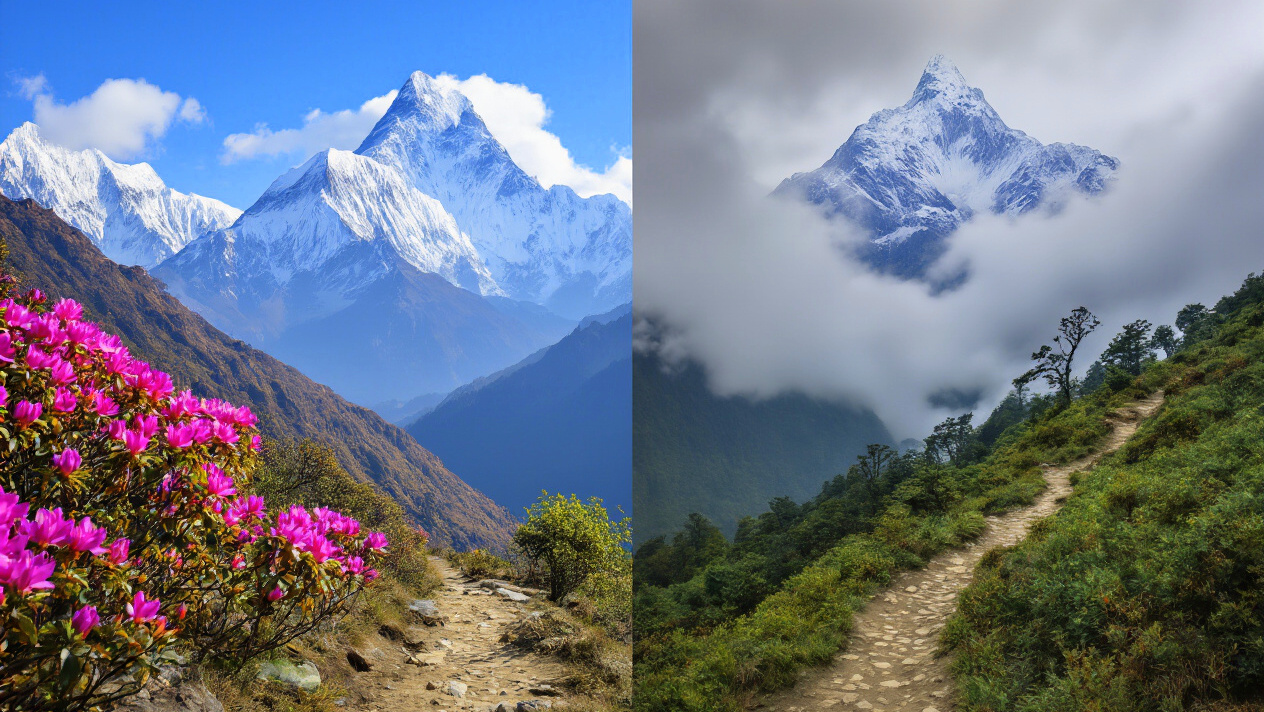
Clear Mountain Views During Spring Season
Spring emerges as our favorite time to experience the Mardi Himal Trek, typically spanning from March through May. We've witnessed countless trekkers fall in love with the crystal-clear mountain vistas that this season delivers. The post-winter atmosphere creates exceptional visibility, allowing us to capture those Instagram-worthy shots of Machapuchare, Annapurna South, and Hiunchuli in all their glory.
We consistently observe how the warming temperatures gradually melt away the winter cloud cover, revealing panoramic views that stretch for miles. Our spring expeditions often feature morning visibility that extends beyond 100 kilometers, offering unobstructed views of the entire Annapurna massif. The rhododendrons bloom magnificently during this period, painting the hillsides in vibrant reds and pinks while creating a stunning foreground for mountain photography.
Stable Weather Patterns in Autumn Months
Our autumn treks from September to November provide the most predictable weather conditions we encounter throughout the year. We've learned to trust this season for its remarkable stability, with minimal precipitation and consistent atmospheric pressure that keeps the skies clear for days at a time.
We particularly appreciate how the post-monsoon period brings crisp, clean air that enhances mountain visibility. Our trekking groups consistently experience sunny mornings followed by pleasant afternoons, with occasional evening cloud formations that create dramatic sunset displays. The absence of afternoon thunderstorms, which plague other seasons, allows us to maintain flexible itineraries without weather-related delays.
|
Season |
Temperature Range |
Precipitation |
Visibility |
Crowd Level |
|
Spring |
8°C to 18°C |
Low |
Excellent |
Moderate |
|
Autumn |
6°C to 16°C |
Minimal |
Outstanding |
High |
Mild Temperatures Perfect for Comfortable Trekking
We design our Mardi Himal expeditions around the comfortable temperature ranges that make trekking enjoyable rather than enduring. During optimal seasons, we experience daytime temperatures between 12°C to 18°C at moderate altitudes, perfect for maintaining steady hiking pace without overheating.
Our nighttime temperatures rarely drop below freezing at base camp elevations, eliminating the need for extreme cold-weather gear that burdens other high-altitude treks. We've found that these mild conditions allow trekkers to sleep comfortably in standard three-season sleeping bags, reducing equipment costs and pack weight significantly.
Morning temperatures typically hover around 8°C to 10°C, creating invigorating starts to our trekking days without the harsh bite of extreme mountain cold. We consistently observe how these moderate conditions help prevent altitude-related complications, as trekkers don't struggle with additional stress from extreme temperatures while their bodies adjust to elevation changes.
Wildlife Encounters and Natural Biodiversity
Himalayan Bird Species Watching Opportunities
Our trek through the Mardi Himal region opens up incredible opportunities to spot some of the most fascinating bird species in the Himalayas. We regularly encounter the vibrant Himalayan Monal, Nepal's national bird, with its spectacular rainbow-colored plumage that catches the morning light beautifully. The forests along our route come alive with the calls of different pheasant species, including the colorful Kalij Pheasant and the elusive Blood Pheasant.
We've spotted numerous high-altitude species during our treks, from the majestic Golden Eagle soaring above the ridgelines to the charming Snow Pigeon that seems to dance through the rocky terrain. The rhododendron forests provide perfect habitats for smaller species like the Fire-tailed Sunbird and various laughingthrush species that fill the air with their melodious songs.
Early morning and late afternoon prove to be the best times for bird watching along our routes. We always carry binoculars and encourage our trekkers to pause and appreciate these moments when nature puts on its finest show. The diversity we encounter ranges from high-altitude raptors to forest-dwelling songbirds, making each day on the trail a new adventure for bird enthusiasts.
Native Flora Including Medicinal Plants and Herbs
The Mardi Himal trek takes us through an amazing botanical journey where we discover an incredible variety of native plants and medicinal herbs that have been used by local communities for generations. We walk through dense rhododendron forests where dozens of species bloom in brilliant reds, whites, and pinks, creating natural galleries that take your breath away during spring season.
Our experienced guides point out traditional medicinal plants like Yarsagumba (Cordyceps), one of the most valuable fungi in traditional medicine, and Jatamansi, known for its calming properties. We encounter wild garlic, nettle, and various mint species that locals still harvest for cooking and healing purposes. The trail reveals juniper bushes, whose berries and leaves hold significant medicinal value in traditional Himalayan medicine.
We make sure our trekkers understand the importance of these plants to local ecosystems and communities. The higher we climb, the more specialized the vegetation becomes, with alpine flowers like blue poppies and primulas creating stunning displays against the rocky landscape. Our guides share stories about how their grandparents used these plants, keeping alive centuries-old knowledge about natural healing practices.
Chance Sightings of Himalayan Wildlife
During our Mardi Himal adventures, we've been lucky enough to spot some incredible Himalayan wildlife that makes each trek unique and memorable. The elusive Himalayan Tahr, a wild goat species, occasionally graces us with its presence on the rocky slopes, especially during early morning hours when they come out to graze.
We've had exciting encounters with red pandas in the bamboo and rhododendron forests, though these shy creatures require patience and quiet observation. Our guides know the best spots and times to increase chances of sightings. Leopard tracks appear along certain sections of our route, reminding us we're walking through their natural habitat, though actual sightings remain rare and special.
More commonly, we spot various deer species including barking deer and musk deer, along with wild boar that leave clear signs of their presence throughout the forest floors. The night brings different sounds as we hear porcupines rustling through undergrowth and occasionally catch glimpses of Himalayan black bears in distant clearings.
We always maintain safe distances and follow ethical wildlife viewing practices. Our local guides understand animal behavior patterns and seasonal movements, helping us position ourselves for the best possible wildlife experiences while respecting these magnificent creatures and their natural environments.
Professional Guide Services and Safety Standards
Experienced Local Guides with Mountain Knowledge
Our team consists of certified mountain guides who have grown up in the shadow of the Himalayas. These professionals possess years of trekking experience in the Annapurna region and hold deep knowledge about the Mardi Himal trail's every twist and turn. We carefully select guides who have completed mountaineering training courses and hold licenses from the Nepal Mountaineering Association.
Our guides speak multiple languages including English, Hindi, and local dialects, making communication seamless throughout your journey. They're not just pathfinders – they're storytellers who share fascinating insights about local customs, medicinal plants, and the geological history of the region. When you trek with us, you're walking with someone who can identify bird calls, predict weather patterns, and navigate safely through challenging terrain.
We maintain strict qualification standards for all our guides. Each team member undergoes regular first aid training, wilderness emergency response courses, and customer service workshops. This ensures they can handle both routine guidance and unexpected situations with equal expertise.
Emergency Evacuation and Safety Protocol Support
We take your safety seriously by implementing comprehensive emergency response protocols. Our guides carry satellite communication devices on every trek, allowing instant contact with rescue services if needed. We maintain partnerships with helicopter rescue operators who can reach the Mardi Himal area within hours of an emergency call.
Before starting any trek, we conduct thorough safety briefings covering altitude sickness symptoms, proper hydration techniques, and emergency procedures. Our guides monitor trekkers' health conditions daily, checking for signs of altitude-related issues and adjusting itineraries when necessary.
We've established evacuation points along the trail and maintain updated emergency contact information for all participants. Our office in Pokhara operates 24/7 during trekking seasons, providing backup support and coordination for any emergency situations that might arise.
Quality Equipment and Accommodation Arrangements
We provide high-quality trekking equipment including sleeping bags rated for mountain temperatures, trekking poles, and safety gear. Our equipment undergoes regular maintenance and replacement to ensure peak performance in mountain conditions. We also arrange comfortable accommodations in well-maintained tea houses that meet our cleanliness and safety standards.
Our team personally inspects all accommodation facilities along the route, ensuring they provide proper bedding, clean bathrooms, and safe drinking water. We work exclusively with lodge owners who share our commitment to environmental responsibility and guest satisfaction.
Comprehensive Trek Insurance Coverage Options
We strongly recommend comprehensive travel insurance and help you understand coverage options that include high-altitude trekking and emergency evacuation. Our team provides detailed information about policy requirements and assists in connecting you with reliable insurance providers who specialize in adventure travel coverage.
Value-for-Money Trekking Experience
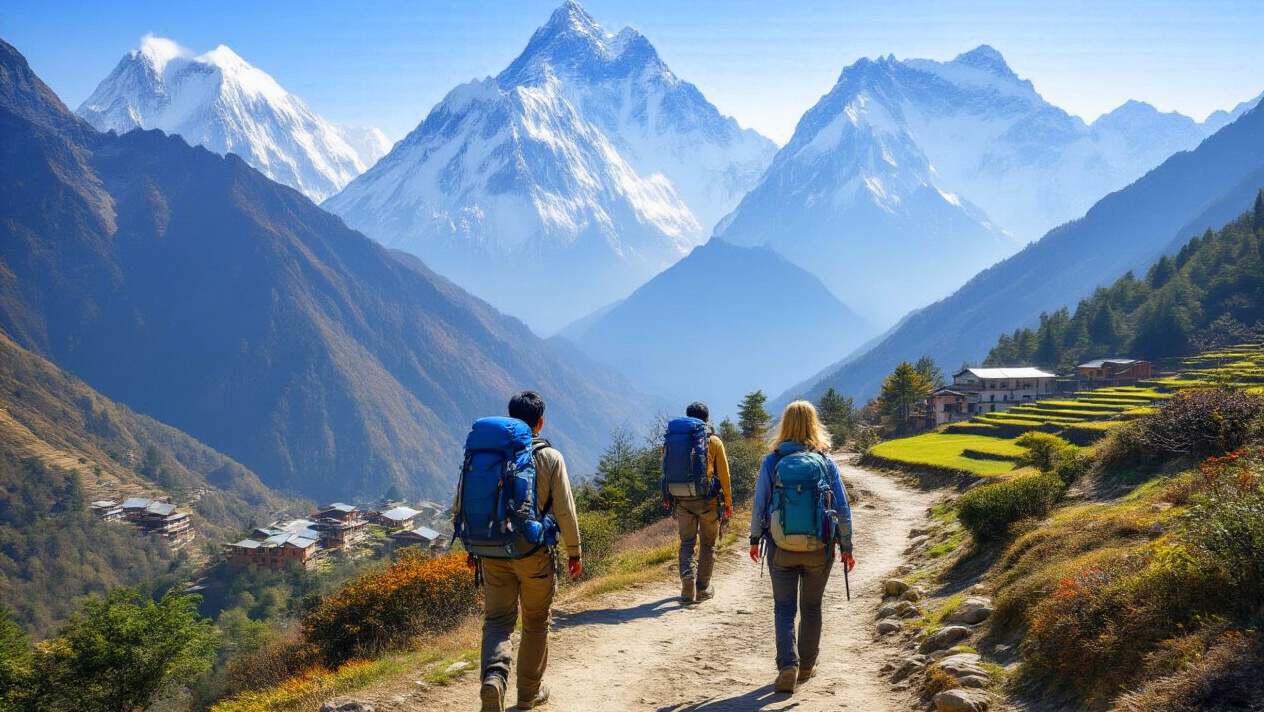
Affordable Package Costs Compared to Longer Treks
We've designed our Mardi Himal Trek packages to deliver exceptional value without compromising on quality. At just $599-$899 per person for a 5-7 day trek, we offer significantly lower costs compared to longer Annapurna Circuit or Everest Base Camp expeditions that can cost $1,500-$3,000. Our shorter duration means you save on accommodation, meals, permits, and guide fees while still experiencing the incredible beauty of the Himalayas. We keep our group sizes optimal to maintain personalized service while spreading costs efficiently among trekkers.
The trek's proximity to Pokhara eliminates expensive domestic flights, and our direct trail access reduces unnecessary transportation costs. We've negotiated excellent rates with local teahouses and lodges, passing these savings directly to our clients. Our transparent pricing structure shows exactly what you're paying for - no surprise additions or inflated costs hidden in fine print.
High-Quality Services at Competitive Pricing
We pride ourselves on delivering premium services that rival much more expensive trekking companies. Our experienced guides undergo rigorous training in first aid, altitude sickness prevention, and cultural education. We provide high-quality gear including sleeping bags rated for mountain conditions, trekking poles, and emergency equipment at no extra charge.
Our partnership with established teahouses ensures clean accommodation with proper sanitation facilities. We include nutritious meals prepared by trained cooks who understand trekkers' dietary needs. Our support staff maintains excellent client-to-guide ratios, typically 1:6, ensuring personalized attention throughout your journey.
We invest heavily in safety equipment including satellite phones, first aid kits, and emergency evacuation insurance. Our guides carry comprehensive medical supplies and have direct communication with rescue services. Despite these premium offerings, we maintain competitive pricing through efficient operations and long-term partnerships with local suppliers.
All-Inclusive Packages with No Hidden Costs
Our Mardi Himal Trek packages include everything you need for a successful mountain adventure. We cover all permits including TIMS cards and Annapurna Conservation Area permits, which can cost $50-$70 if purchased independently. Transportation from Pokhara to the trailhead and back is included, saving you the hassle of arranging local transport.
We provide three meals daily throughout the trek - breakfast, lunch, and dinner - featuring both local Dal Bhat and international cuisine options. Accommodation in teahouses is covered for the entire journey, including private rooms where available. Our packages include professional guide services, porter support, and all government taxes.
Emergency evacuation insurance coverage is built into our pricing, providing peace of mind without additional premiums. We even include small group equipment like water purification tablets and basic medications. Our transparent pricing policy means the quoted price is your final cost - no surprise fees for "extras" that other companies might charge separately.
The Mardi Himal Trek offers everything we could want from a Himalayan adventure without the overwhelming crowds that come with more popular routes. We get stunning mountain views, diverse landscapes ranging from rhododendron forests to alpine meadows, and authentic cultural experiences in traditional villages. The trek strikes that perfect balance - challenging enough to feel accomplished, yet accessible enough for most intermediate hikers to enjoy safely.
What makes this trek special is how it delivers premium mountain experiences at incredible value. We can start our journey easily from Pokhara, witness incredible wildlife and biodiversity, and trek through multiple ecological zones while enjoying professional guide services that prioritize our safety. Whether we choose to trek during the clear spring months or the crisp autumn season, Mardi Himal rewards us with memories that last a lifetime. Pack your bags and join us on this hidden gem of the Annapurna region - your next great adventure awaits in the heart of Nepal's magnificent mountains.
If you need any further information, please contact us, Email: at [email protected], Phone: +977- 985 100 5129 (WhatsApp)
#Tags
Tripadvisor
5.0838 reviewsGoogle
4.8105 reviewsFacebook
4.1 recommend44 ReviewsTrustpilot
4.1 Great(5 reviews)- Trusted by50K plus traveller




